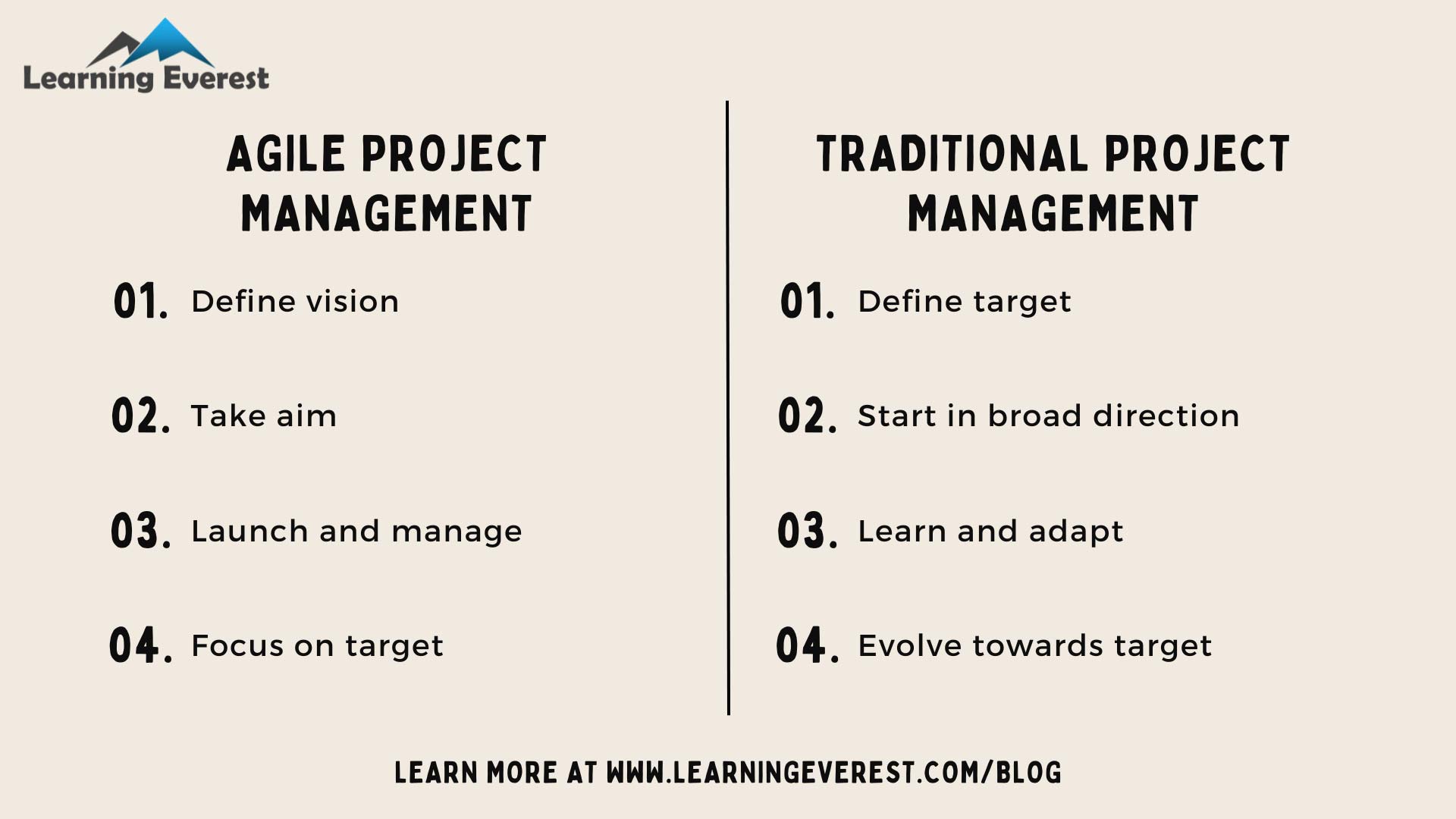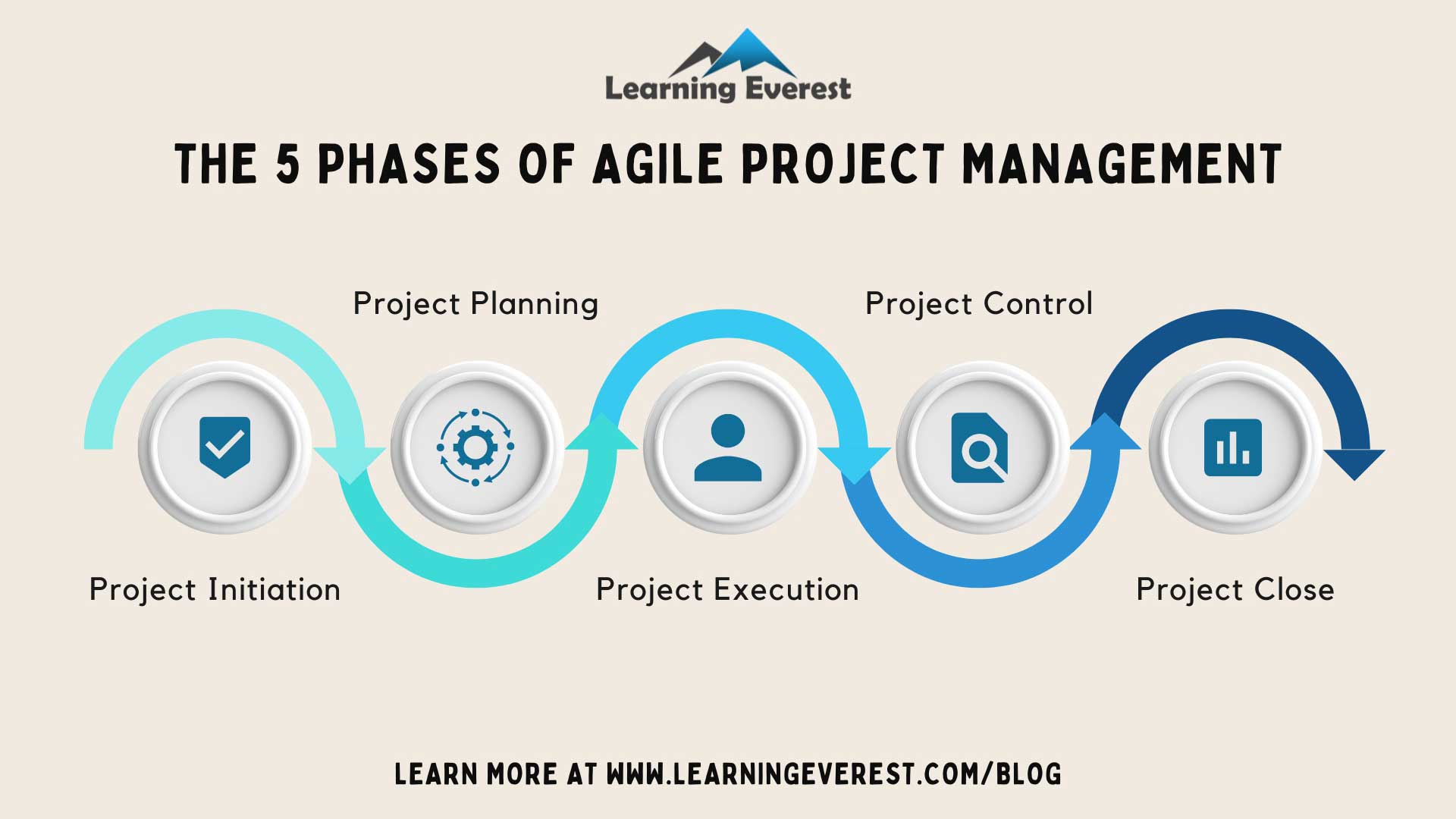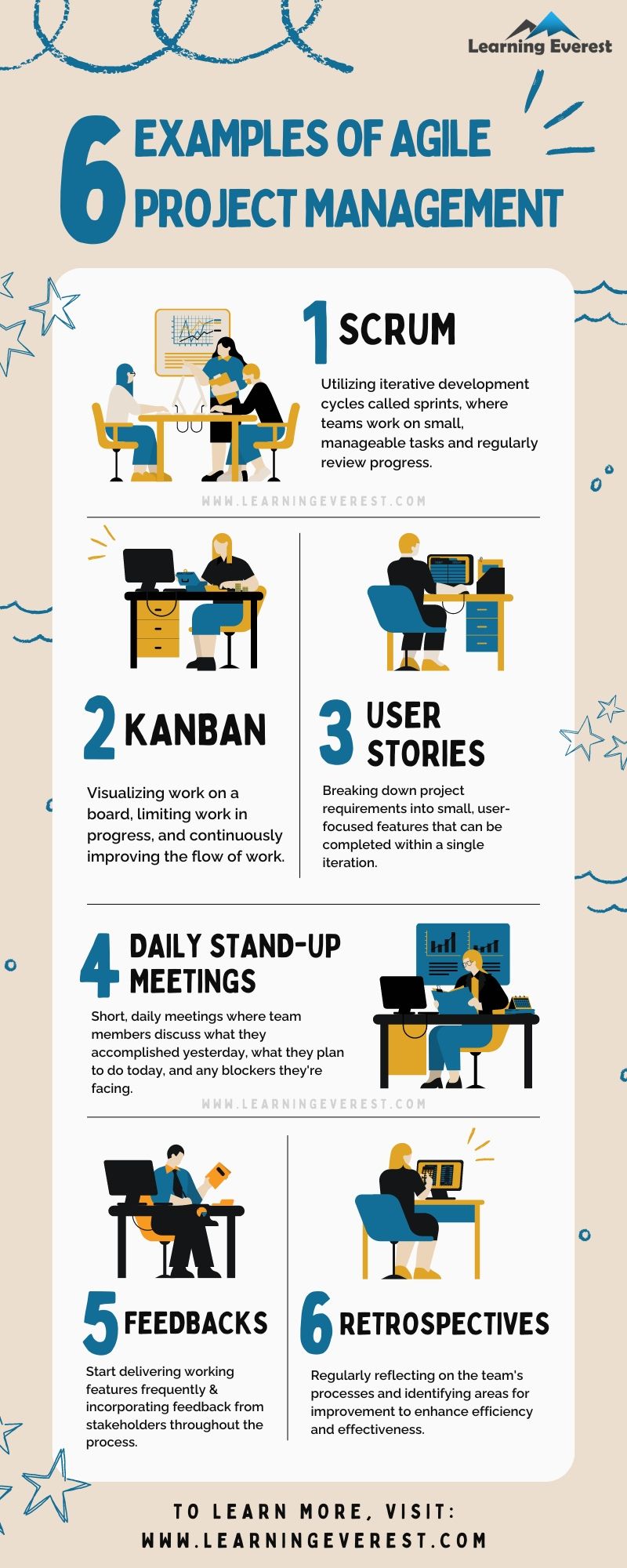Agile project management methodologies have emerged as a popular approach, offering flexibility, efficiency, and improved collaboration. This article explores the benefits and misconceptions of implementing agile methods in project management training programs. You’ll also find the steps to optimize your corporate eLearning project management process using an agile methodology.
Table of Contents
What is Project Management?
A project is a series of structured tasks, activities, and deliverables carefully executed to achieve a desired outcome. These significant undertakings require leadership and skill to execute successfully, and this is where project managers shine.
Project managers use project management to implement various tools, techniques, and approaches. They have the skills, knowledge, and experience to motivate teams to meet a project’s needs and achieve its desired outcome. Project managers are critical to the success of projects. And their skills are highly sought after to help organizations achieve their goals.
What is Agile Methodology?
Agile project management methodology is an iterative way of delivering a project throughout its life cycle. It divides projects into minor phases and guides teams through cycles of planning, execution, and evaluation. An agile approach aims to release advantages throughout the process rather than only at the end.
The History
The history of agile methodology can be traced back to 1957: Bernie Dimsdale, John von Neumann, Herb Jacobs, and Gerald Weinberg employed incremental development techniques (now known as Agile) to build software for IBM and Motorola. Not knowing how to classify their approach, they realized it differed from traditional in many ways.
The modern-day agile methodology was officially introduced in 2001 when 17 software developers met to form alternative project management methodologies. Having a fixed vision of the flexible and team-oriented software development approach, they mapped it out in the Manifesto for Agile Software Development.
The history of Agile is a testament to its transformative power in software development and project management. It has revolutionized organizational success by embracing change, valuing individuals and interactions, and focusing on delivering customer value.

Online Project Management Training
In this article, we share everything you need to know about agile project management and how to implement them in your team.
What are the core principles of agile project management?
Agile project management focuses on delivering maximum profit against business priorities in the time and cost allowed, primarily when the drive to give is greater than the risk. Some core principles of agile methodologies include:
The agile project breaks a requirement into smaller pieces, which the group then prioritizes in terms of importance. It advocates for frequent delivery with a preference for a shorter timescale. This helps get feedback early and continuously improves the end product/service. This principle underlines the importance of maintaining high standards of quality, making future changes more accessible and more cost-effective.
Agile project management promotes collaborative working, especially with clients. Agile teams are expected to adapt to changing requirements even later in development.
An agile project reflects, learns, and adjusts at regular breaks to ensure that the client is always satisfied and receives benefits from the outcomes. This principle ensures that teams are continuously learning and improving their processes.
Agile project management methods integrate planning with execution, allowing organizations to create a working mindset that helps employees respond effectively to changing requirements. This principle gives teams the autonomy to manage their work, often leading to more innovative solutions and highly motivated team members.
Common misconceptions and resistance to agile project management
The agile methodology faced a number of misconceptions, as with any other new approach or concept. To name a few:
Misconception 1: Agile models cannot work with other models
This incompatibility of agile project management with process models driven by other methods is, again, a misconception but untrue. On the other hand, agile methodology offers more flexibility to its users by including various aspects of traditional methods. Though the stages in agile project management’s development cycles are shorter and multiple, they are complete like the other conventional methods.
Misconception 2: No prior planning is needed for agile projects
Another common misconception about agile project management methodology is that it is not plan-driven. Though it is true that the agile development process is not plan-driven, planning is still required at several stages to address the goals and priorities of the project and the team. Establishing the goals and objectives for a project helps in planning the smaller tasks of the project and determining how to handle them effectively.
Misconception 3: The role of management is eliminated in agile methodology
Another misconception regarding agile project management is that it eliminates the necessity of a clear management and roles due to its exceptional flexibility compared to traditional plan-driven methods. Again, this is not true, as the role of every person is defined in agile, and the product owner works as the project manager. The product owner is responsible for supervising the entire project, including the goals and priorities of the team involved in the project, and leading the team to accomplish the assignment.
Misconception 4: Agile methodology is specifically for software development
Though initially, agile project management started with software development, over time, it emerged as a complete methodology, which can be used for projects of various other types where the potential for change and continuation is greater and feedback cycles are shorter. A wide range of industries use this methodology, from technology to financial services, especially by establishing businesses and launching new products and services.
However, even after these misconceptions, agile project management is considered a helpful development methodology for developers in a wide range of industries worldwide.

The 5 Phases of Agile Project Management
A Step-By-Step Guide to an Agile eLearning Project Management Course Design
As organizations try to stay competitive in an increasingly dynamic marketplace, adopting Agile methodologies in project management training offers a pathway to success. By embracing flexibility, collaboration, and continuous improvement, businesses can empower their project teams to navigate change effectively and deliver value to stakeholders.
Agile training programs are designed to adapt to changing needs, deliver value quickly, and foster collaboration and feedback. They are especially useful for organizations that face uncertainty, complexity, and rapid change in their markets, customers, or technologies. But how do you create agile training programs that are effective, engaging, and aligned with your goals? Here are some tips to help you plan, design, and deliver agile project management training for your next corporate eLearning course design.
1. Align
The first step is aligning with the learner’s and organization’s needs and objectives. This includes an in-depth assessment of the current training program, performance gaps, and how the project management training must evolve to meet the company’s and its employees’ growing needs. eLearning developers should also identify the desired goals and how the online program will serve to meet these outcomes. Conduct extensive training needs research to determine online training goals and objectives. This may involve surveys, feedback, task observations, eLearning focus groups, and analysis of Big Data.
2. Get Set
Once you have formed a clear set of goals, desired outcomes, and overall organizational objectives, it’s time to gather materials and determine how you will tackle the issues at hand. Carefully examine all the tasks, skills, and information that employees need to know, then gauge their current proficiency levels. Choose tools, software, and systems that will help them get to the desired destination effectively. Conduct a task and skills assessment to break every topic down into its basic components.
3. Iterate & Implement
The third step in designing agile project management is to iteratively develop a solution that addresses the training gaps. The first goal is to create an online module, activity, or lesson that offers employees the skills or information required to improve their project management skills. After doing so, you can deploy it to your corporate learners. Once again, research must be conducted to identify preferred methods of delivery, such as what mobile devices the employees commonly use to access the eLearning materials.
4. Leverage
Soon after the core online training materials have been made and deployed, you should decide how you will offer ongoing support to your employees. This will be done by leveraging all the resources at your disposal, including your employees, technology, and tools. For example, create branching scenarios or simulations using an eLearning authoring tool, so your employees can discover real-world applications. Figure out which performance management resources you possess and how they can be used to your benefit.
5. Evaluate
The last step in the agile project management process is to evaluate the effectiveness of your online project management training program. This also includes developing criteria to measure your training effectiveness and see if the desired goals have been fulfilled. Be specific about how often you measure these goals and the online assessment methods. If an employee has not met the goals, clearly outline how you will proceed.
What else would you like to add? Write to us.
Infographic

6 Examples of Agile Project Management
Knowledge Check!
Ready to transform your project management training with agile methodologies? Get in touch now to learn more!





